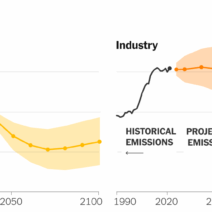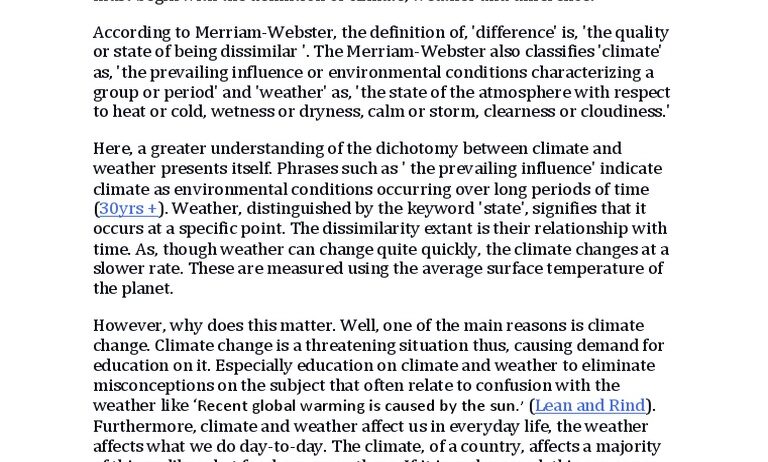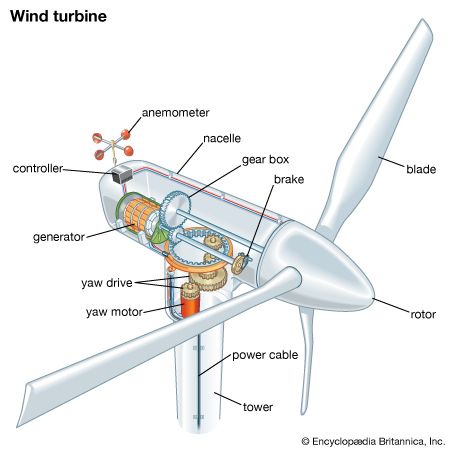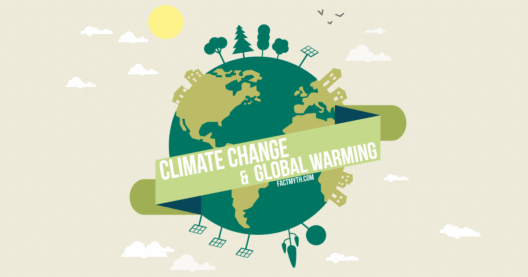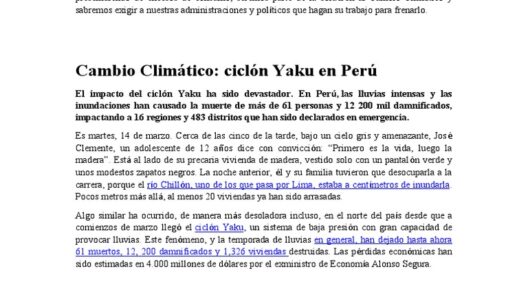When examining the dynamics of our planet’s environment, it’s essential to distinguish between climate and weather. Though often interchanged in conversation, they signify distinctly different phenomena. Understanding these variances can demystify the complexities of environmental sciences and enhance our grasp of global changes. This article elucidates the fundamental differences between climate and weather, imparting important insights for both casual readers and those seeking scientific understanding.
The Variability of Weather
Weather encapsulates the short-term atmospheric conditions in a specific area. It is characterized by fluctuating variables such as temperature, humidity, precipitation, wind speed, and atmospheric pressure. Weather patterns are transient; they can change moment by moment or over hours. A classic example of weather is a sudden downpour or a blustery day. These phenomena are immediate and localized, heavily influenced by geographical features and atmospheric conditions.
To better appreciate the nature of weather, consider the intriguing concept of microclimates. Microclimates refer to localized variances in climate conditions within a larger area, often caused by environmental features such as bodies of water, urban heat islands, and elevation changes. For instance, a shaded park may experience different weather conditions than a nearby sunlit street. These variances underscore the complexity and multifaceted nature of weather.
The Longevity of Climate
In stark contrast, climate is a long-term aggregate of weather patterns observed over extended periods—typically 30 years or more. They are not subject to the whims of daily changes but rather reflect consistent trends and averages. Climate encompasses broad characteristics such as seasonal averages and extremes, prevalent wind patterns, and cycles of precipitation. Regions classified under specific climate zones—tropical, arid, temperate, or polar—provide an overview of expected conditions based on geographical and ecological factors.
Understanding climate requires an appreciation for longitudinal data and statistical approaches. By studying historical weather trends, climatologists can decipher essential details about frequency and severity of weather events, shifts in seasonal patterns, and anomalies compared to standard climatic behavior. The discussion around climate is often bifurcated into specific classifications, such as continental or maritime climates, which have profound implications for biodiversity and ecosystem resilience.
The Interconnectedness of Weather and Climate
One might ask how weather and climate interact. Understanding this interplay is vital, particularly in discussions surrounding climate change. Weather events are often manifestations of underlying climatic trends. For example, a noticeable increase in the frequency of extreme weather events, such as hurricanes or heatwaves, can be attributed to shifts in climate patterns due to global warming. Scientists have observed that as the planet warms, the interaction between these two phenomena becomes increasingly significant and alarming.
The Climate Change Conundrum
Climate change epitomizes the gravity of modern environmental challenges. It represents a shift in average climatic conditions across the globe, driven by various human activities such as deforestation, industrialization, and the combustion of fossil fuels. The consequences manifest in a host of altered weather patterns—more erratic precipitation, exacerbated droughts, and heightened intensity of storms.
The distinction between weather and climate is often blurred in public discourse, leading to misinterpretations of scientific data. When an individual mentions an unseasonably warm winter day, it is not a rejection of climate change but rather a singular weather event. Nonetheless, an accumulation of such events, when analyzed over decades, can reveal detrimental patterns that endorse the reality of climate transformation.
Societal Implications: Understanding the Nuances
The distinctions between weather and climate are not merely academic; they bear significant societal implications. Accurate communication of these terms aids in better preparedness for weather-related disasters and also informs long-term public policy regarding climate change mitigation. By developing an informed populace that understands these critical distinctions, we can respond more effectively to evolving environmental conditions and implement strategies that safeguard human and ecological well-being.
Engaging with Climate Data
As we delve deeper into environmental science, engaging with climate data is becoming increasingly important. Sources such as meteorological stations, satellite imagery, and climate modeling provide invaluable insights into both weather phenomena and climatic conditions. Interactive platforms enable real-time data dissemination, which fosters a better understanding of local and global patterns. Stakeholders can utilize this information to make informed decisions about agriculture, urban planning, and disaster preparedness.
Investing in Future Awareness
To navigate the complexities of climate and weather effectively, public education is imperative. Initiatives inspired by environmental activism and scientific outreach serve to heighten awareness. Schools and communities can cultivate a culture of environmental stewardship, emphasizing the relevance of both short-term and long-term atmospheric phenomena. Encouraging dialogue and inquiry will arm future generations with the knowledge they need to combat climate challenges effectively.
In conclusion, recognizing the nuanced differences between climate and weather enriches our understanding of environmental science. The ongoing dialogue around these topics prompts an urgent need for awareness and action in combatting climate change. By fostering informed discussions and promoting educational outreach, society plays a pivotal role in shaping a sustainable future amid the complexities of our ever-changing planet.


